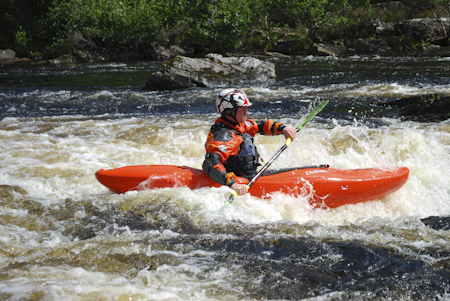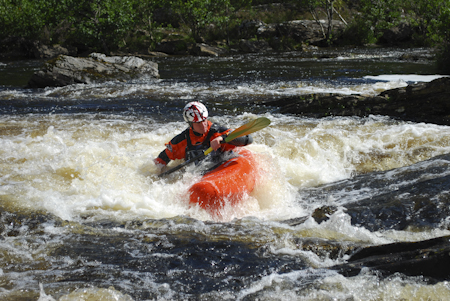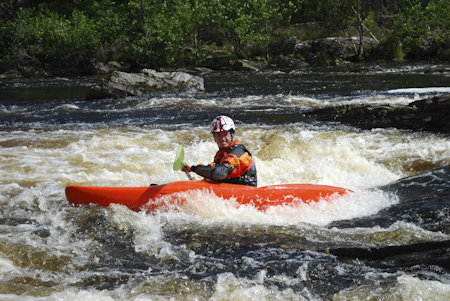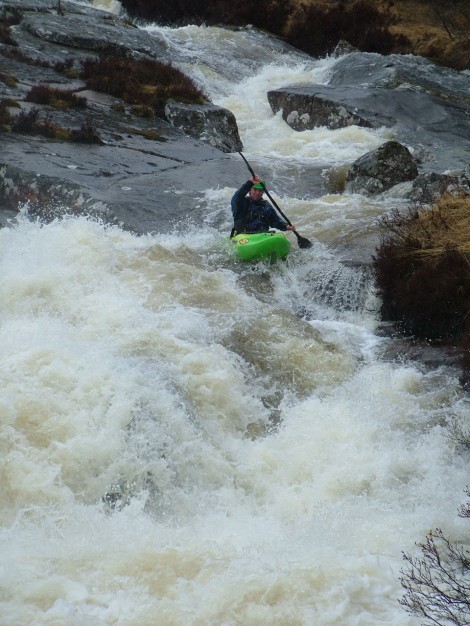Hi Team,
Well after a busy summer of paddling down here in the Southern Hemisphere I finally find myself in front on a computer with some time to report in my new favorite piece of kit from Palm – the all new Amp Vest. I have been a long term user of the Axis Extrem vest and it has served me marvelously well, and seen me through a few fairly sporting swims! Needless to say it was going to require something pretty special to sway me away from the old faithful. What Palm has delivered in the Amp Vest is exactly what was required. Lightweight yet still with plenty of flotation, the Amp will be perfect for everything from a freestyle session in the local hole, to month long expeditions. What has really impressed me with the Amp though is the comfort! I have never experienced a PFD that molds to the body so comfortably and offers unrestricted freedom of movement, Palm have absolutely set the benchmark with the Amp.
Look for footage of the Amp in action on the Red Bull Chronicles – coming to a TV screen near you soon. In the meantime I have attached a short video of myself and the Amp enjoying the last of the NZ summer.
Cheers,
Ben: www.benbrown.co.nz
http://www.youtube.com/watch?v=wtj_7Jphtgs
The Big Paddle, taking place at Symonds Yat on the 15th and 16th May 2010 will play host to the return of the Cardboard Canoe Race, an event long absent from the paddling calendar. The event, sponsored by CKUK Magazine involves a race down a short section of whitewater in a craft constructed only from cardboard and tape, be it kayak, canoe, or other…

The race, open to Big Paddle ticket holders, will take place at 17:00 hrs on Saturday the 15th May at Symonds Yat rapids.
Prizes will be awarded for engineering prowess, style and originality, as well as performance, so if you want to race then get your thinking hat on and build yourself a lean, mean, recycled cardboard racing machine!
For more information, race rules, and tickets to the Big Paddle, visit: www.thebigpaddle.com.

Over the next few months I’m going to be posting up some technique breakdowns from the back issues of Canoe and Kayak UK Magazine. The techniques have been revised where needed, although this applies more to the freestyle technique which will come later. In the mean time I thought it would be best to start from the ground up with a bit of stopper stability which everyone can get something from re-visiting.
Learning how to blast in and out of a stopper whilst keeping control is a highly valuable skill which will aid confidence, safety and enjoyment for any river runner. Whether you want to learn how to control a trashing and avoid swims or if you’re looking to build a freestyle repertoire this article will provide you with a solid base.
Paddling into the stopper:
The aim of the game is control from the start so with this in mind paddling into a stopper is more of a delicate matter than first meets the eye. You want to settle into a stable side surf so think about how you will be most comfortable getting there… This maybe by using the shoulder of a stopper to guide you in or by paddling on to the tow back so you have a moment to settle before the stopper gets full hold of you.
The stopper will force you into a side surf one way or another so if you are not already sideways as you cruise in then a gentle sweep stroke to turn you will help. If you do not help by turning you may find that your bow purls in the trough of the stopper causing some beat down. If you’re finding yourself out of control from the start then you are probably using the head down, paddle hard approach which can cause you to be unprepared for the stopper grabbing you.

Paddling in on the back of the foam.

Helping the boat settle into a controlled side-surf
Moving around in the stopper:
When trying to gain stability in a stopper always keep your body upright with head over your boat and remember your paddle is there if you need it, not as a crutch to lean on. Use your hips and knees to tilt the kayak downstream so that water flows under your boat. This means that in between low braces (when you need a little support) your paddle is free to be used for what it was designed… propulsion.
At this stage in your paddling it should be fairly apparent that putting a stroke in on your upstream side whilst in a stopper is not a good idea. To move in the direction you’re facing use forward strokes on your downstream side and look where you want to go, not at the bow of your boat! As you want to move the boat forward, try not to lean too far forward as this will load the bow, causing it to sink into the seam line and give you more resistance which will prevent you from getting anywhere fast. Keeping body weight centered is best.
When trying to move backwards across a stopper all the same concepts apply, but obviously a reverse stroke is used at the same time as turning head and torso to look over your downstream shoulder to spot where you want to be. Also leaning over the bow slightly more will give the stern less resistance whilst maintaining your stability so your strokes will be more efficient.

Weight over the boat, using the paddle for propulsion, not as a support crutch.

Using the paddle for support in a moment of instability. Getting weight over the boat to gain control again.
Getting out of the stopper
The majority of natural stoppers have weak spots, these maybe the corners, a tongue through the middle or a less retentive part. At weak points water close to the seam line will be flowing downstream away from the stopper as opposed to being recirculated back into it.
Using our stability and strokes to get to these weak points can provide an opportunity to get our boat pointing downstream and paddle hard out of the stopper. A common mistake when desperately trying to exit is getting to the weak point and forgetting to keep your body upright and stable, the result could be many combinations from a back loop or just being spun back in. In some cases it may be an idea to get to the weak spot then purposefully turn your kayak to sink either the bow or stern in an attempt to grab the undertow which flows downstream and can push you out.

Using the shoulder to turn downstream. To either head out or let it take me full circle.
Summary
- Head over boat at all times
- Paddle is not to be used as a crutch
- Look where you want to be
- Paddle with a group and have safety
Photo’s courtesy of Dave Martin
After years of driving past it, I finally got a chance to stroll up to the Roughburn, way north of the border in Scotland. Turns out the clue’s in the name…

Tom P gritting his teeth. Pic: Sarah Nash
















